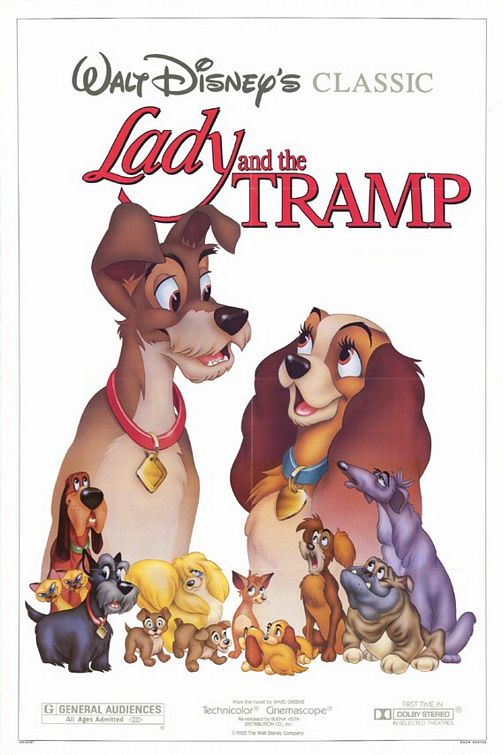 |
| Poster for Lady and the Tramp. via IMDB |
The first
movie that I chose to look at was a favourite of mine from childhood, Lady and the Tramp. I can’t remember the first time that I watched the movie but I
do remember that I watched it over and over again for the majority of my
childhood and has continued to be my favourite Disney movie into adulthood. As
I took the time to look at the movie with a critical eye, I noticed a few
questionable messages in the movie regarding class systems and how the movie
portrays the “American Dream”.
The movie
Lady and Tramp was produced by the Walt Disney Corporation in 1955. The movie shows
through subtle nuance how the class systems in 1950’s America were portrayed.
Lady is a 6 month old Cocker Spaniel who lives in ideal, suburban Midwestern
America with perfectly manicured lawns, fences, and a license to show that she
is owned and cared for by a good, upper class family. Her friends, Jock a Scottish Terrier and
Trusty, a Bloodhound are also both collared and licensed, living their days leisurely
strolling around their neighbourhood but never going beyond the fence line to
the other side of the train tracks. Daniel Goldmark and Utz McKnight, Authors
of “Locating America: Revisiting Disney’s Lady and the Tramp” state that “[Lady and the Tramp] was a way for Disney to
show his audience what America should be and to teach his audience how to
become an American”. These dogs represent upper class Americans who stayed
within their communities, are perfectly assimilated into the American culture
and essentially living the American dream of the time period.
 |
| Tramp living the American Dream. via IMDB |
On the other
side of the tracks you find Tramp. Tramp is a mutt, or mixed breed dog without
an owner who spends his time outwitting humans and stealing or begging for food
at the back of restaurants. Tramp lives on the “wrong side of the tracks” just
outside of the suburban utopian home of Lady. Tramp’s band of friends consists
mainly of immigrants and outcasts. A German Dachshund, a Russian wolfhound, a
British Bulldog, an overly sexualized Lhasa Apso and a Mexican Chihuahua. Each
dog represents their different cultures through fairly insulting stereotypes
which were common during time period during the production of the movie. For
example the bulldog’s accent is cockney, and the Chihuahua appears as a lazy,
stupid dog. None of these dogs have homes and all live on the streets,
attempting to outsmart a dog catcher who wants to put them away and have them
euthanized as they do not belong in the American society that has been created
by Disney.
 |
| The outcasts. Via IMDB |
The
movie clearly shows a divide in how other cultures were to be treated in 1950’s.
To live the American dream you must assimilate yourself into their culture,
otherwise a person is destined to live “on the wrong side of the tracks”. The
movie from Lady’s point of view shows to children that staying within what is
safe, and culturally acceptable boundary is the appropriate way of living, and
venturing outside of your approved social class you will do little more than
cause trouble for yourself and others. As the movie closes Tramp has managed to assimilate himself into
Ladies upper class life, however while her friends are seen greeting them on
Christmas morning, Tramp’s friends are no where to be seen, thus the audience
is left to assume that they remain impounded and forgotten as Tramp’s world no
longer includes them.
Lady
and the Tramp, while it remains a favourite Disney movie of mine has become a
little tainted by my research, and I admittedly am beginning to wonder if this
research project was not the best of topics for me to explore. While I’m
intrigued by what else I’ll find in the other movies I intend to observe, I’m
becoming concerned that I’m going to ruin these movies for myself forever.
I used this exact argument to tell a friend why I have a problem with Disney just today!
ReplyDelete